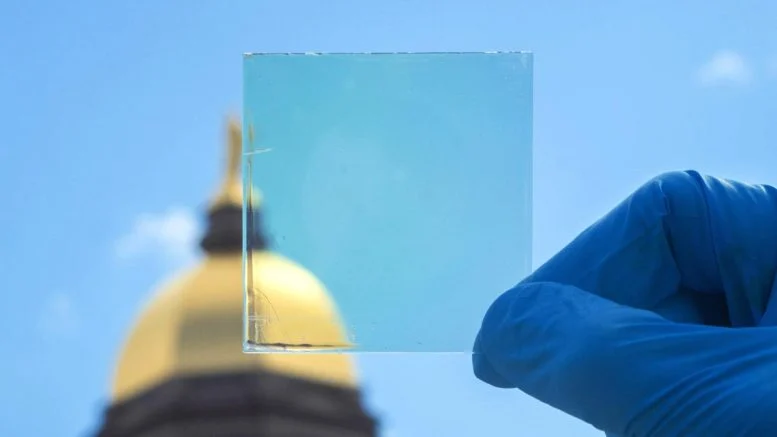The new window covering reduces indoor temperatures and energy costs by selectively blocking heat-producing light, which is effective at all angles of sunlight.
Windows let light in, but they also bring in unwanted heat. The new window covering blocks heat-producing ultraviolet and infrared light and allows visible light to pass through regardless of the sun’s angle. The coating can be used on existing windows or cars and can reduce air conditioning cooling costs by more than a third in hot climates.
Effective design to change sun angles
“The angle between sunlight and your window is constantly changing,” said Tengfei Luo, Dorini Family Professor of Energy Studies at the University of Notre Dame and leader of the study. “Our coating maintains functionality and efficiency regardless of the sun’s position in the sky.”
The window coverings used in many recent studies are optimized for light to enter the room at a 90-degree angle. But at noon, usually during the hottest hours of the day, the sun’s rays enter at oblique angles through vertically placed windows.
Modern materials and methods
Luo and his assistant Songmin Kim had previously created a transparent window coating by depositing ultrathin layers of silica, aluminum oxide and titanium oxide onto a glass substrate. A micrometer-thick silicone polymer was added to increase the cooling capacity of the structure by reflecting thermal radiation through the atmospheric window to outer space.
Further optimization of the layer sequence was required to enable the coating to adapt to different angles of sunlight. But Luo said the trial-and-error approach is impractical given the multitude of possible combinations.
The team used quantum computing, or rather quantum annealing, to shuffle the layers into an optimal configuration that maximizes the transmission of visible light and minimizes the transmission of heat-producing wavelengths and experimentally validated their results.
Results and applications
Their model produced a coating that remained transparent even when light was transmitted from different angles, lowering the temperature in the model room by 5.4 to 7.2 degrees Celsius (9.7 to 13 degrees Fahrenheit). The laboratory’s results were recently published. Cell Reports Physical Science.
“Like polarized sunglasses, our coating reduces the intensity of incoming light, but unlike sunglasses, our coating remains clear and effective even when you tilt it from different angles,” Lo said.
The active learning and quantum computing scheme developed to create this coating can be used to design a wide variety of materials with complex properties.













